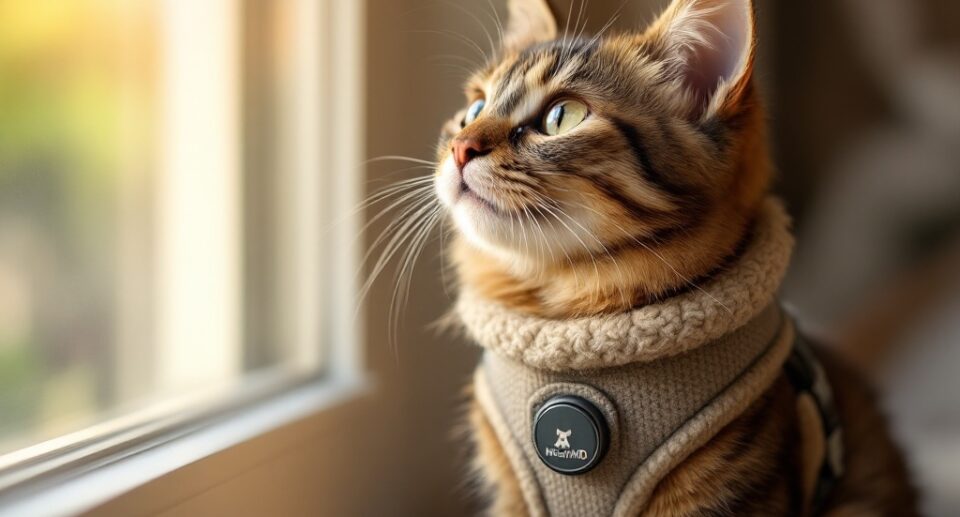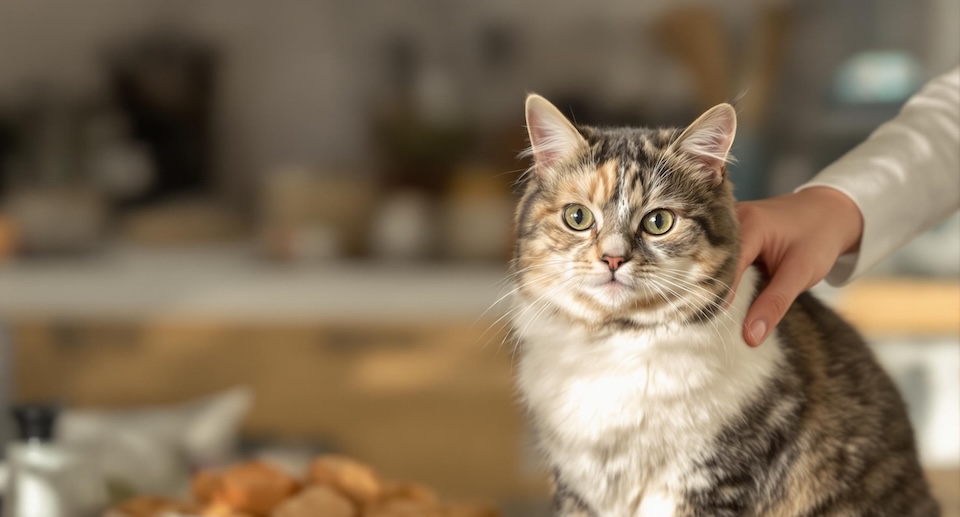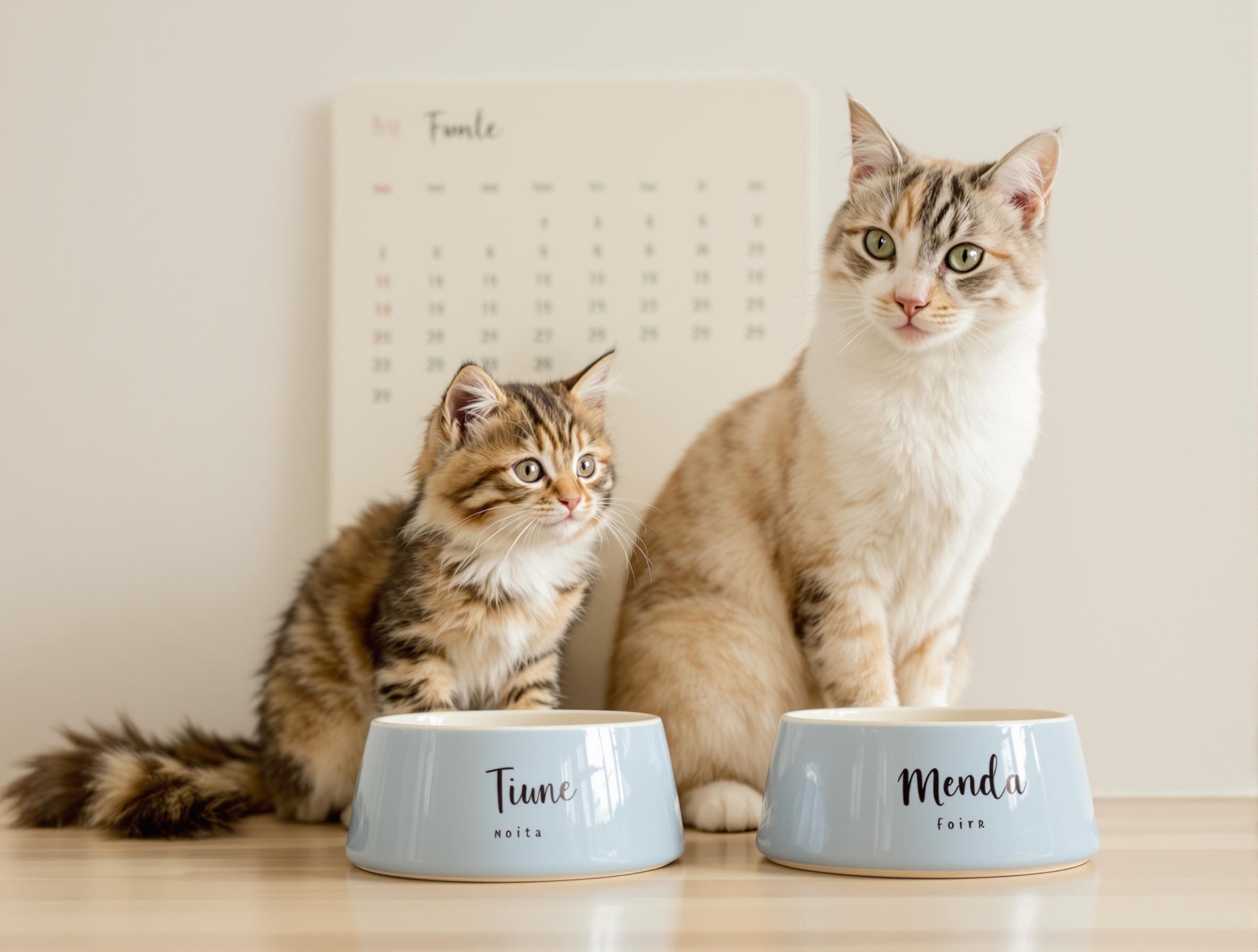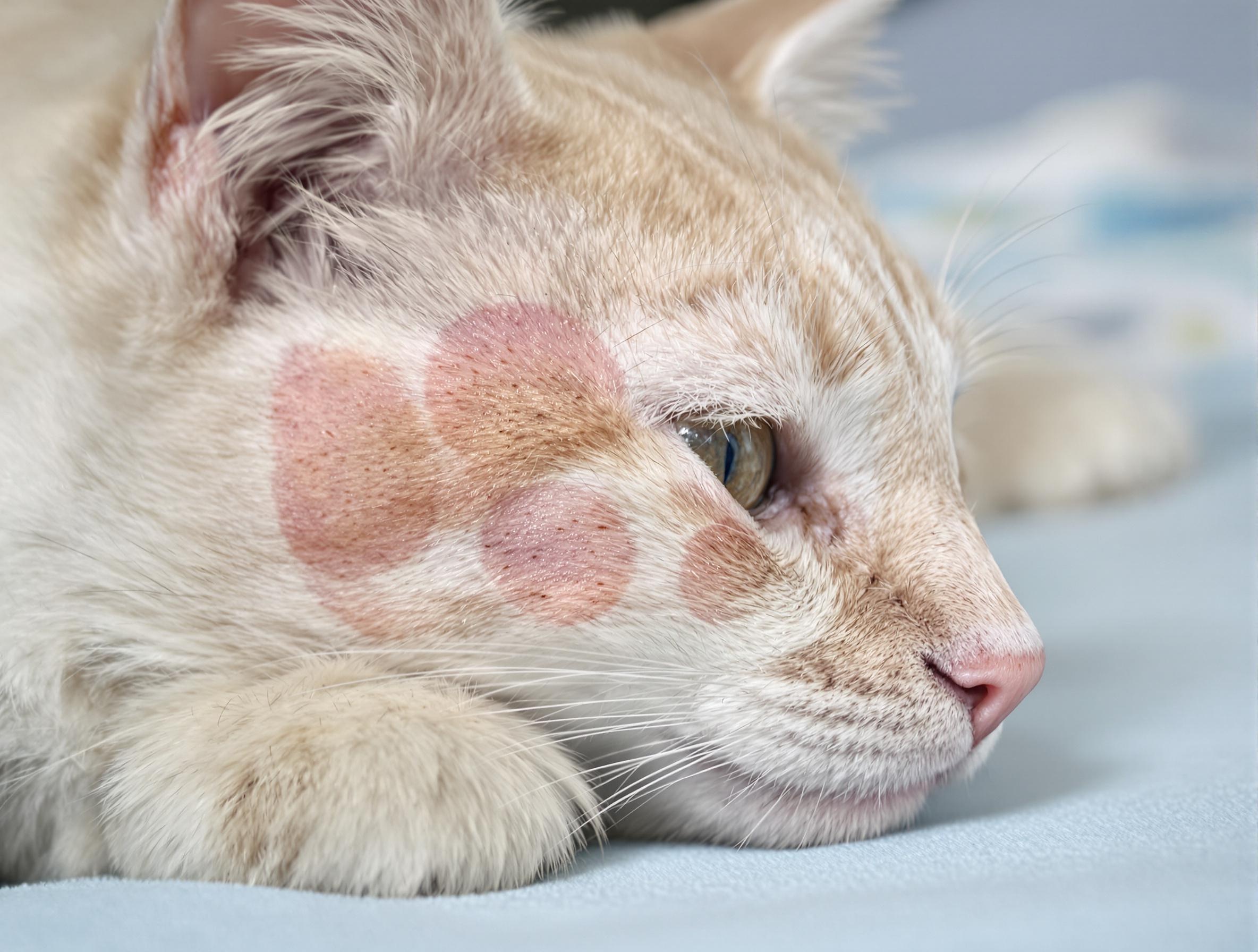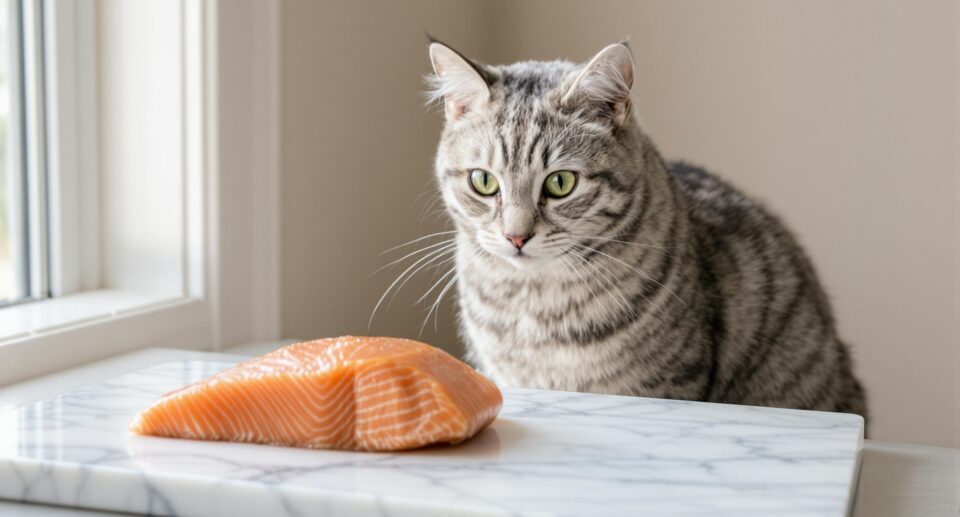
Key Takeaways
- Always check with your veterinarian before adding human foods to your cat’s diet to make sure they’re safe and nutritionally appropriate.
- Some human foods, like cooked chicken, salmon, and eggs, can be healthy additions, but they should make up no more than 10% of your cat’s daily calories.
- Start with small portions and introduce new treats gradually to monitor your cat’s tolerance and prevent digestive upset.
While a balanced commercial cat food provides the foundation for feline nutrition, certain human foods can be a healthy addition when chosen carefully. Foods like lean meats and fish provide valuable proteins and essential fatty acids, supporting muscle health and a glossy coat. However, not all human foods are safe for cats, and some can cause serious health issues if introduced improperly.
Before offering any new food, it’s essential to consult a veterinarian or pet nutritionist to ensure it fits into your cat’s dietary needs. Cats have unique nutritional requirements, and feeding them the wrong foods—even in small amounts—can lead to digestive upset or nutrient imbalances. If you’re considering supplementing their diet with homemade or raw foods, professional guidance is even more crucial to maintain the right balance of protein, taurine, and essential vitamins.
For reliable information on feline nutrition, PetHealthMD offers helpful resources to guide pet owners in making informed choices about their cat’s diet.
1. Chicken
Cats are obligate carnivores, meaning their bodies thrive on meat-based proteins—in fact, they require three times more protein than humans to stay strong and healthy. Plain, cooked chicken is an excellent high-protein treat that supports muscle strength and overall well-being.
Preparing chicken for your cat is simple. Start with boneless, skinless chicken breast, cook it thoroughly until there’s no pink left, and let it cool completely before serving. Keep it plain and unseasoned—no salt, pepper, oils, or spices.
If it’s their first time trying chicken, start with a tiny taste and watch for any signs of digestive sensitivity. For variety, cooked turkey can also be a safe and healthy protein option.
2. Salmon
Salmon is a flavorful and nutritious treat that supports your cat’s skin, coat, and overall health. Packed with omega-3 fatty acids, it helps keep your cat’s fur soft and shiny while promoting heart and joint health.
Tuna is another fish cats love, but it should be offered in moderation due to its higher mercury content. Always choose cooked, unseasoned tuna instead of canned varieties packed in oil or brine.
How to serve salmon safely:
- Remove all bones and skin before cooking.
- Steam or bake without oil, salt, or seasoning.
- Cook thoroughly at 365°F for 12–15 minutes until flaky.
- Break into small pieces and let cool before serving.
- Limit portions to 1–2 small pieces once or twice a week.
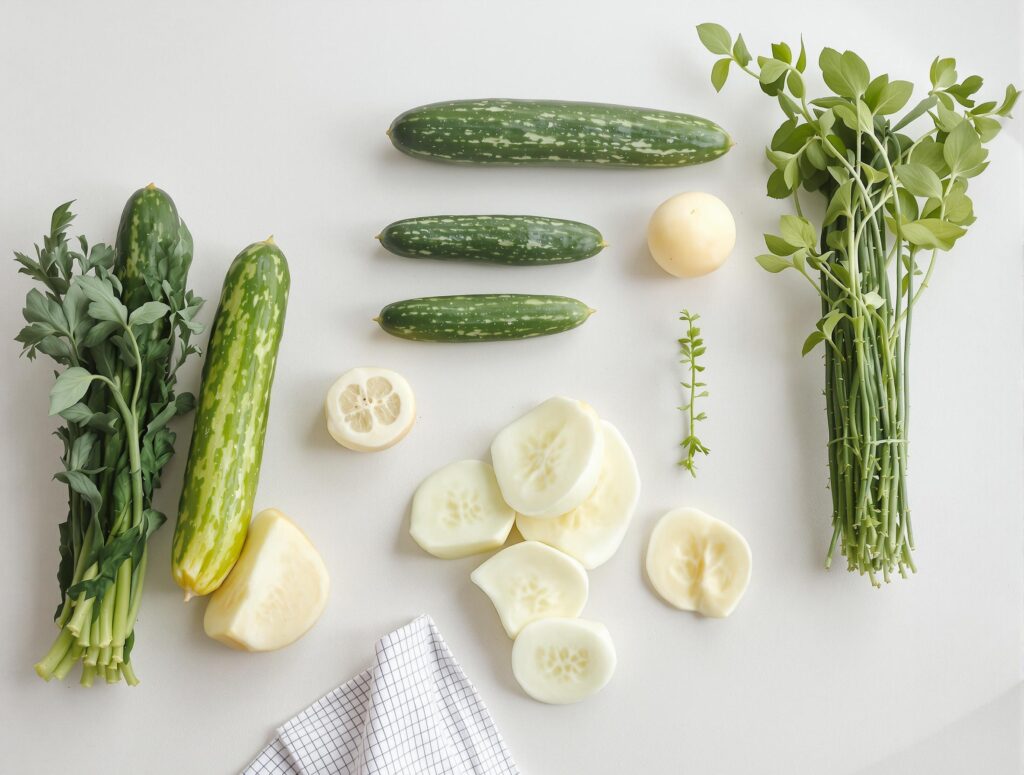
3. Cucumber
Cucumbers are a hydration-rich vegetable that supports digestion while offering a satisfying crunch. With 95% water content, they can be a great addition to your cat’s diet.
To prepare cucumbers safely, wash them thoroughly, peel the skin, remove the seeds, and slice them paper-thin to prevent swallowing difficulties. You can mix cucumber pieces into your cat’s wet food or serve them as a separate treat.
4. Egg
Eggs are a protein-packed treat that provide iron, vitamin D, and B vitamins to support muscle strength and a healthy coat. Always cook eggs thoroughly before serving—boiled or scrambled without butter, oil, or seasoning is best.
Start with a teaspoon-sized portion once or twice a week, mixing it into your cat’s regular food. Avoid raw eggs, as they can contain harmful bacteria and reduce nutrient absorption.
5. Cheese
Cheese is a tempting treat for many cats, useful for rewarding good behavior or hiding medications. However, since cats have a limited ability to digest lactose, it should be offered in small portions.
How to serve cheese safely:
- Choose hard cheeses like cheddar or Swiss.
- Offer tiny portions—a pea-sized piece is enough.
- Introduce it slowly and watch for digestive upset.
- Avoid soft cheeses like brie or blue cheese.
6. Blueberries
Blueberries are one of the few fruits cats can safely enjoy, offering antioxidants, hydration, and fiber. They support the immune system and may help combat cell damage.
How to feed blueberries:
- Offer 1–2 fresh or frozen berries per week.
- Wash thoroughly and remove stems.
- Try frozen blueberries in summer for a fun treat.
Blueberries should remain an occasional snack due to natural sugars.
7. Yogurt
Plain, unsweetened yogurt can be a good treat for cats. Unlike milk, yogurt contains live probiotics that help break down lactose, supporting gut health and digestion. It also provides calcium and protein for strong bones and muscles.
Offer yogurt in small amounts and watch for signs of digestive upset. Even though it’s easier to digest than milk, overconsumption can still cause stomach issues.
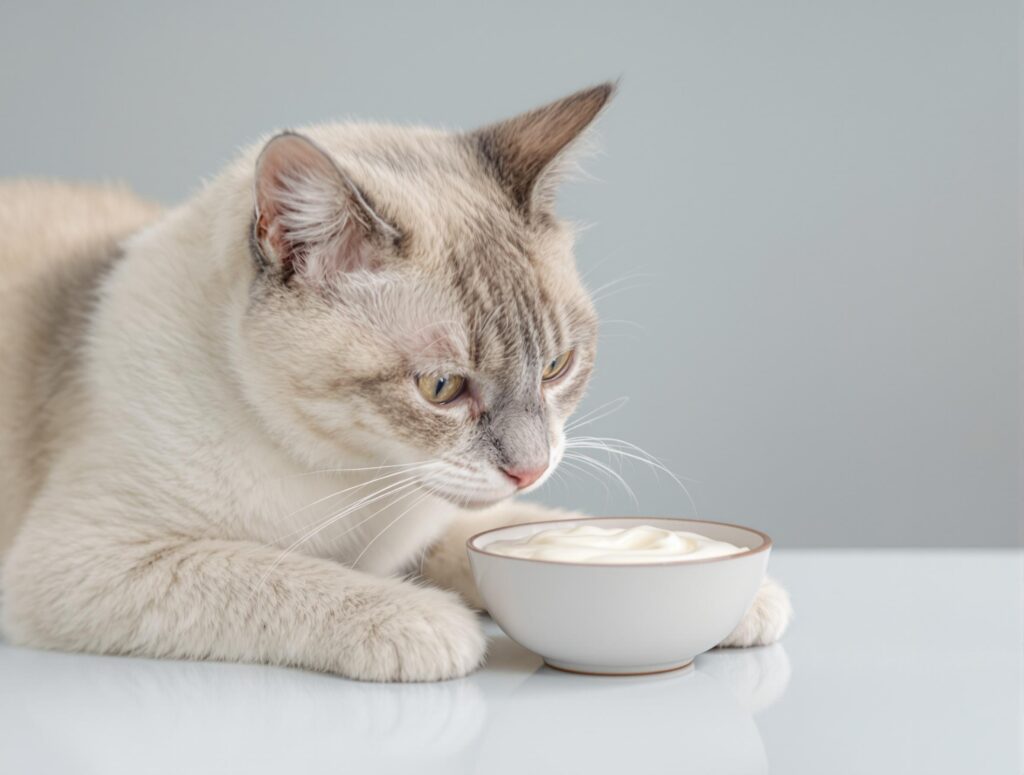
Enjoy Safe and Nutritious Treat Options for Your Cat
Many cat parents love sharing food with their furry friends, but treats should complement, not replace, a balanced commercial diet. Always check with your vet if you’re unsure about a food’s safety, especially if your cat has health concerns.
Ready to start sharing safe treats with your cat? Check out our cat treats and vitamins for healthy, vet-approved options. You can also explore cat food and nutritional supplements to keep your feline friend thriving.

